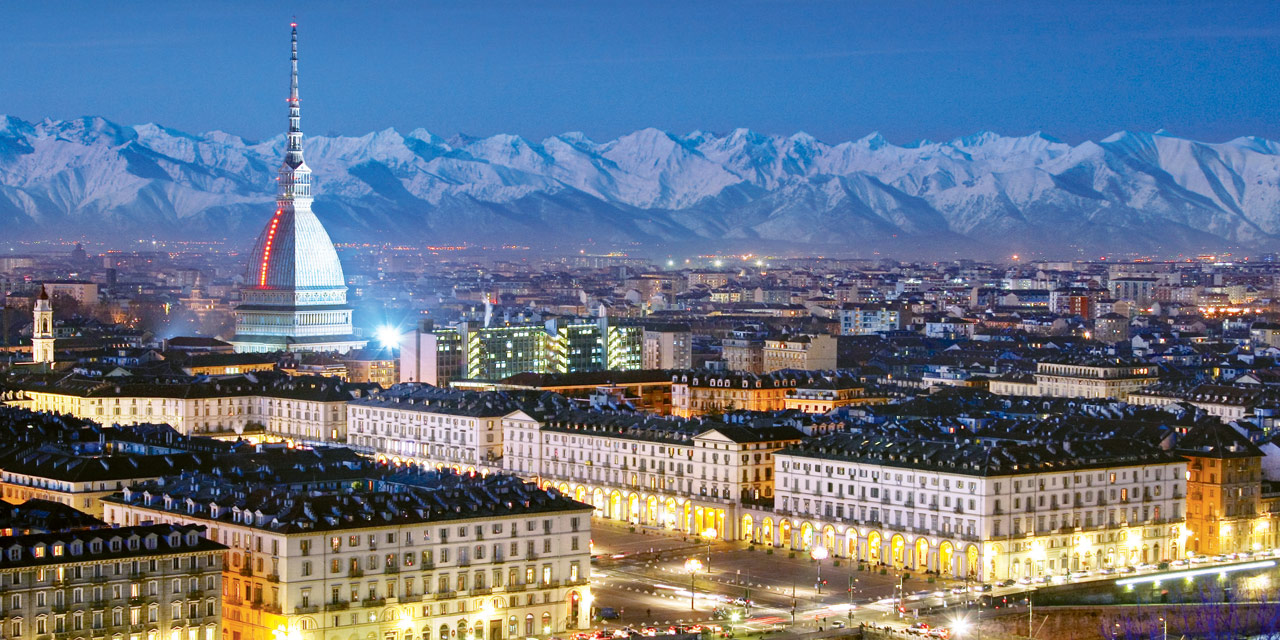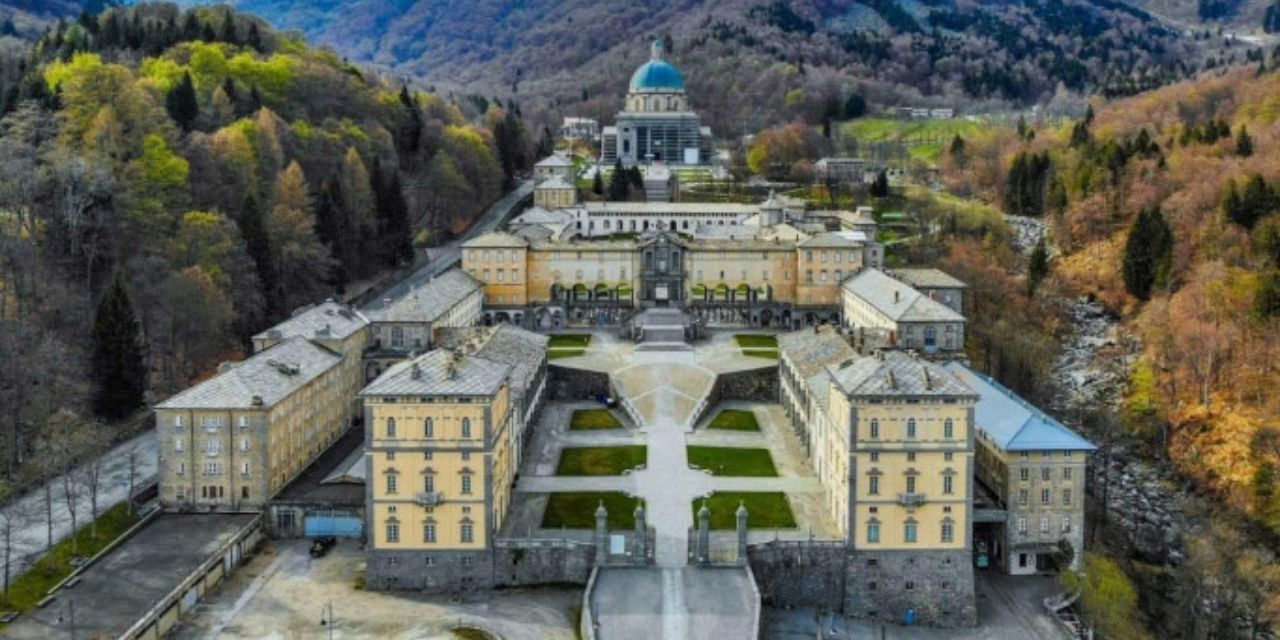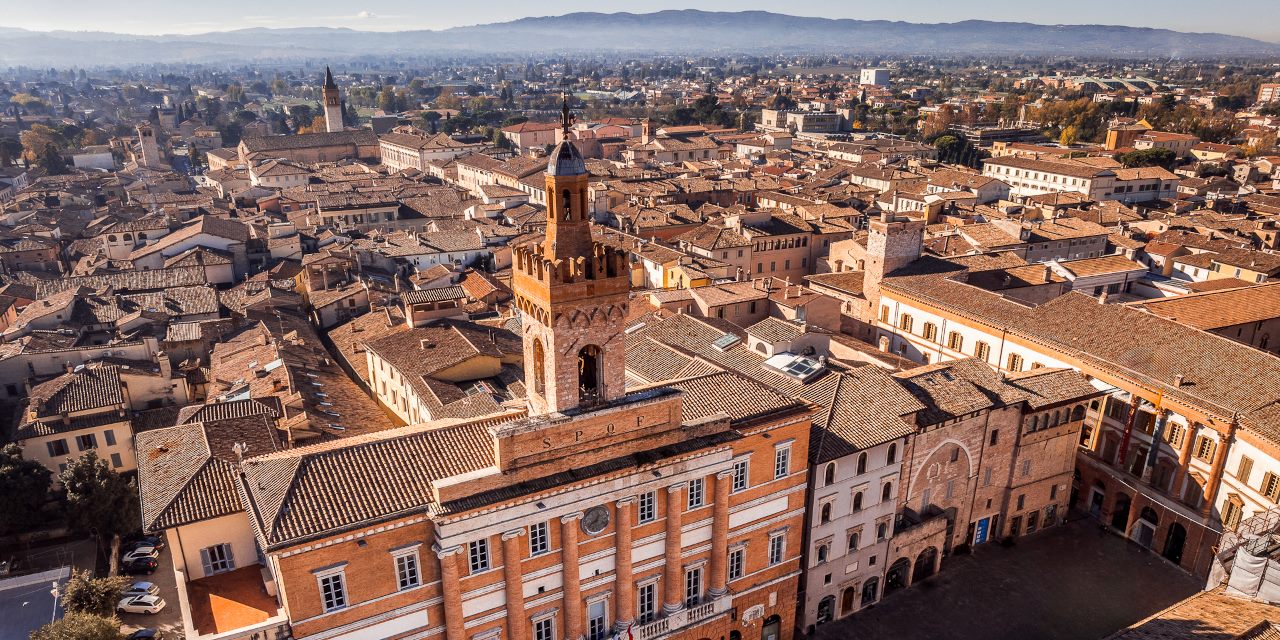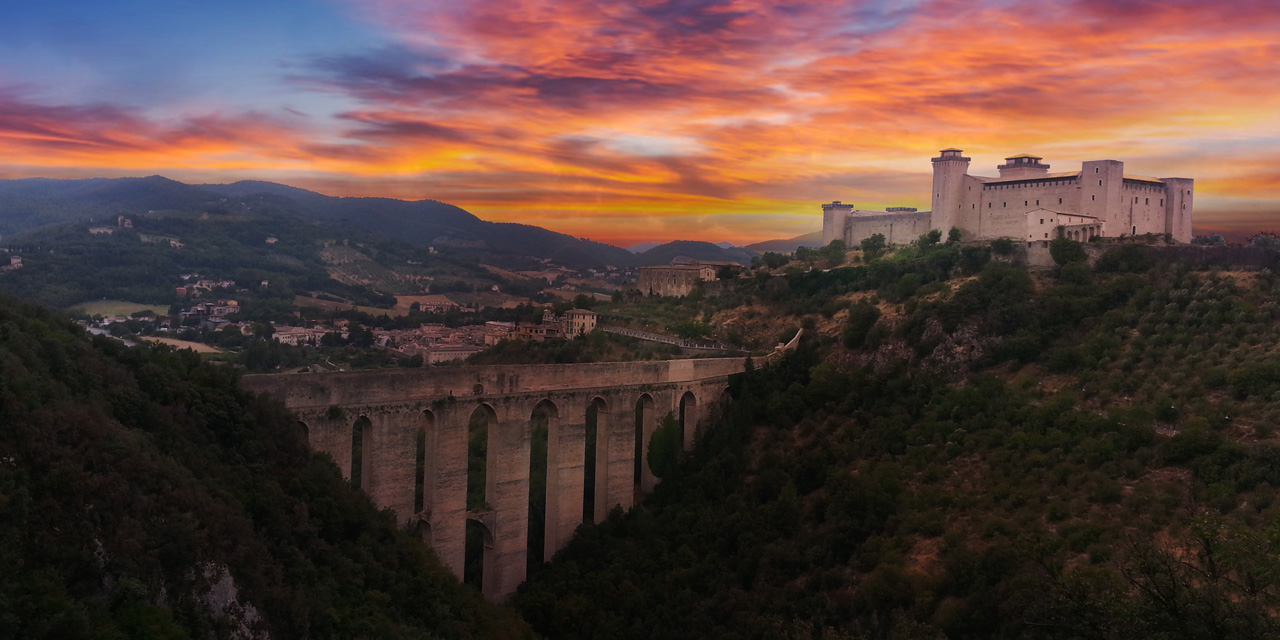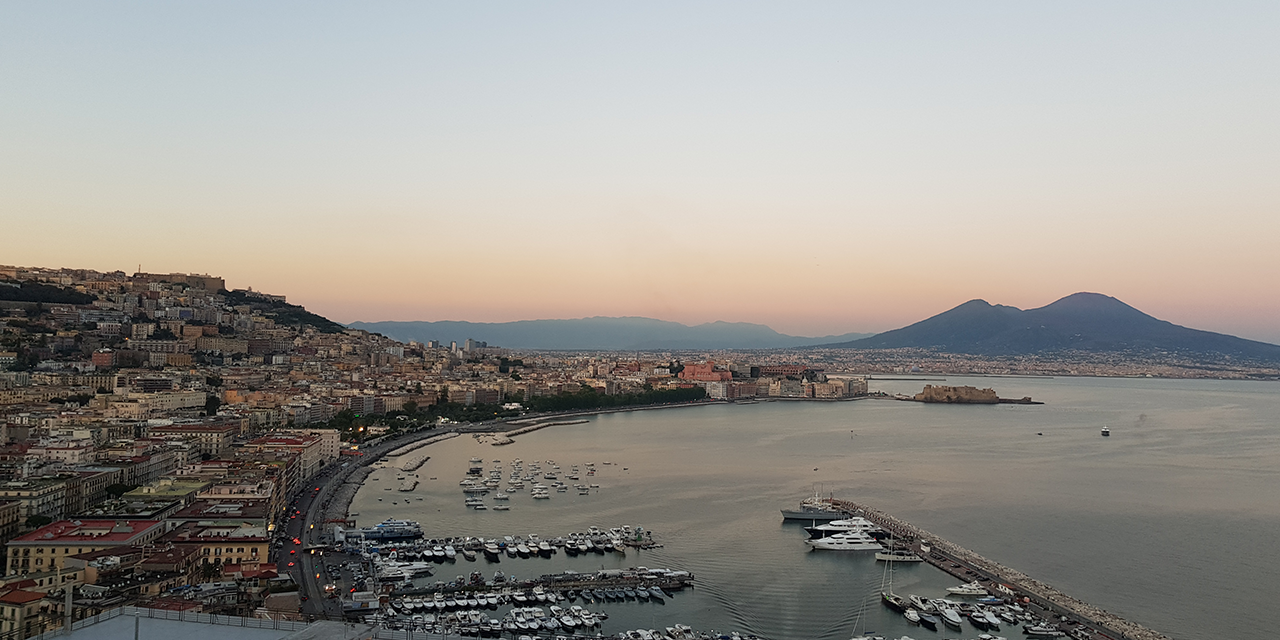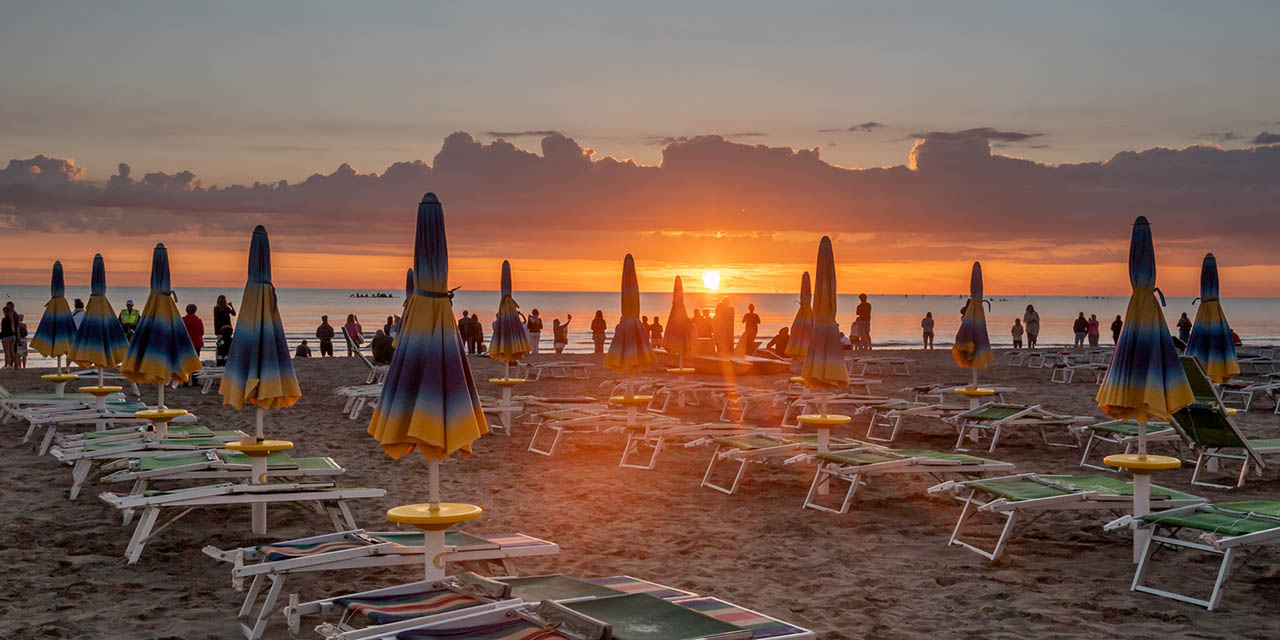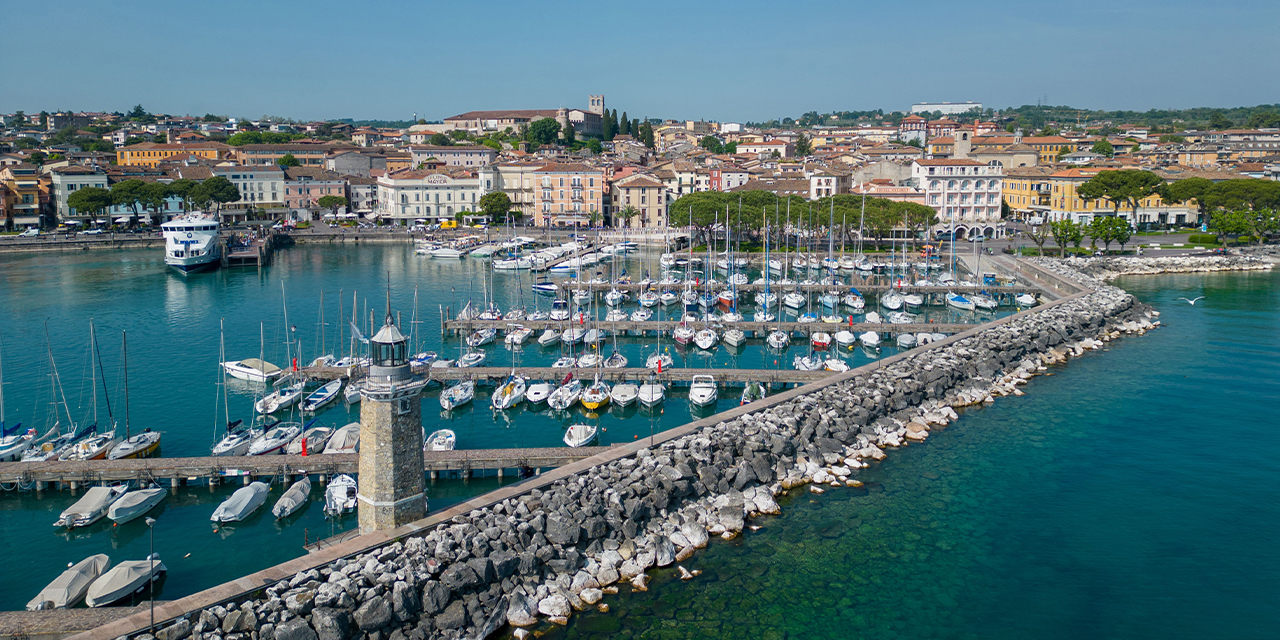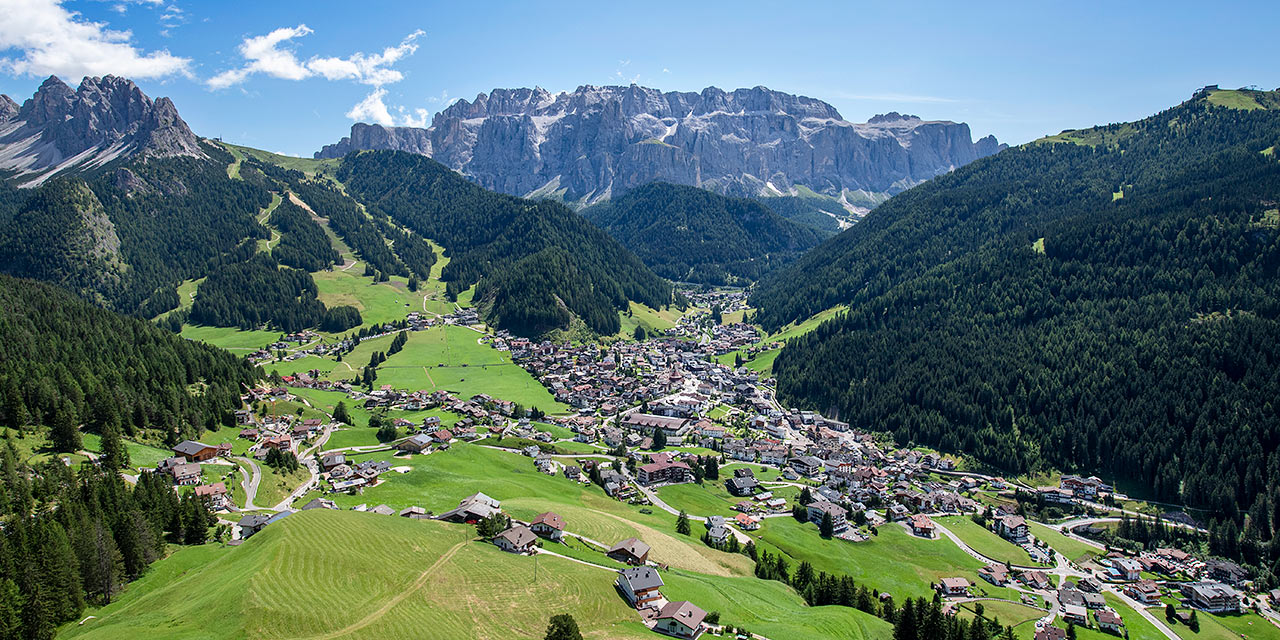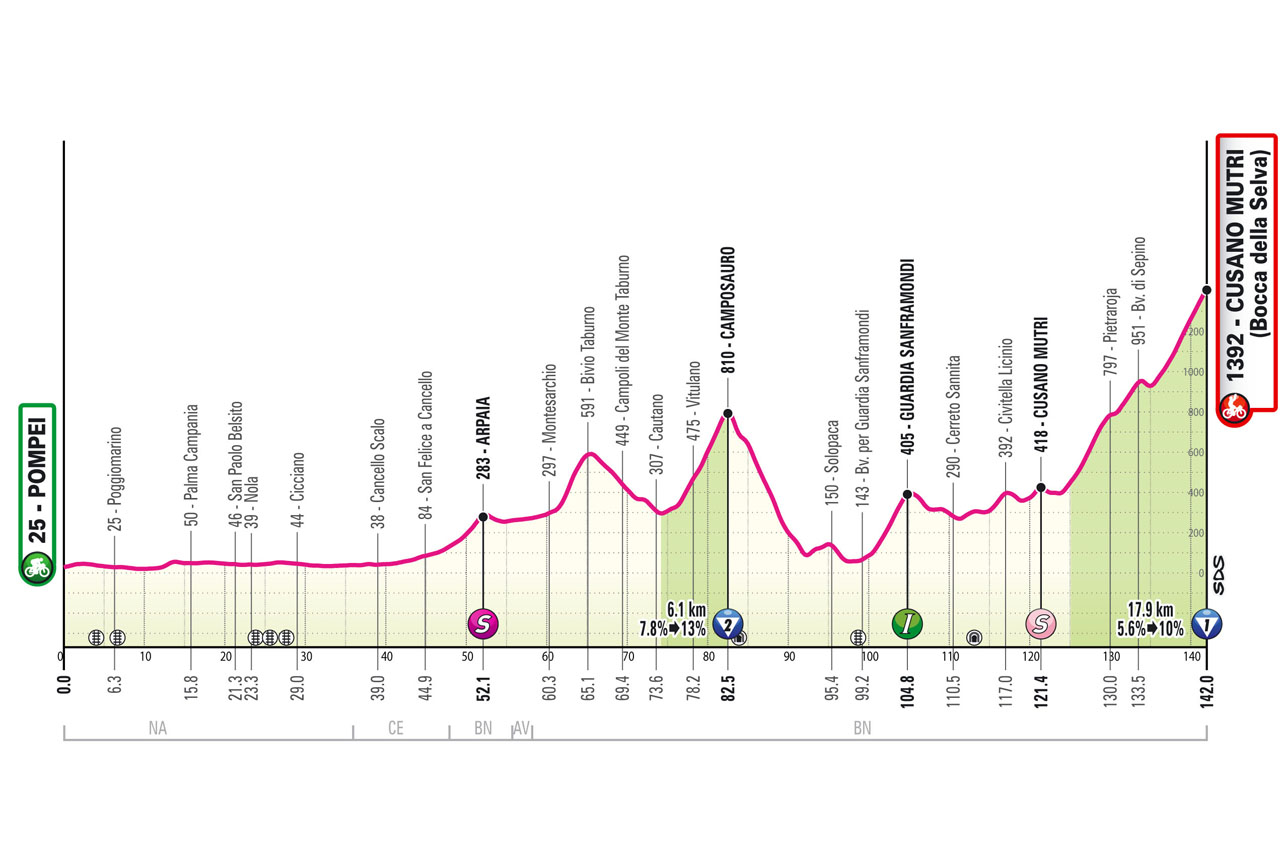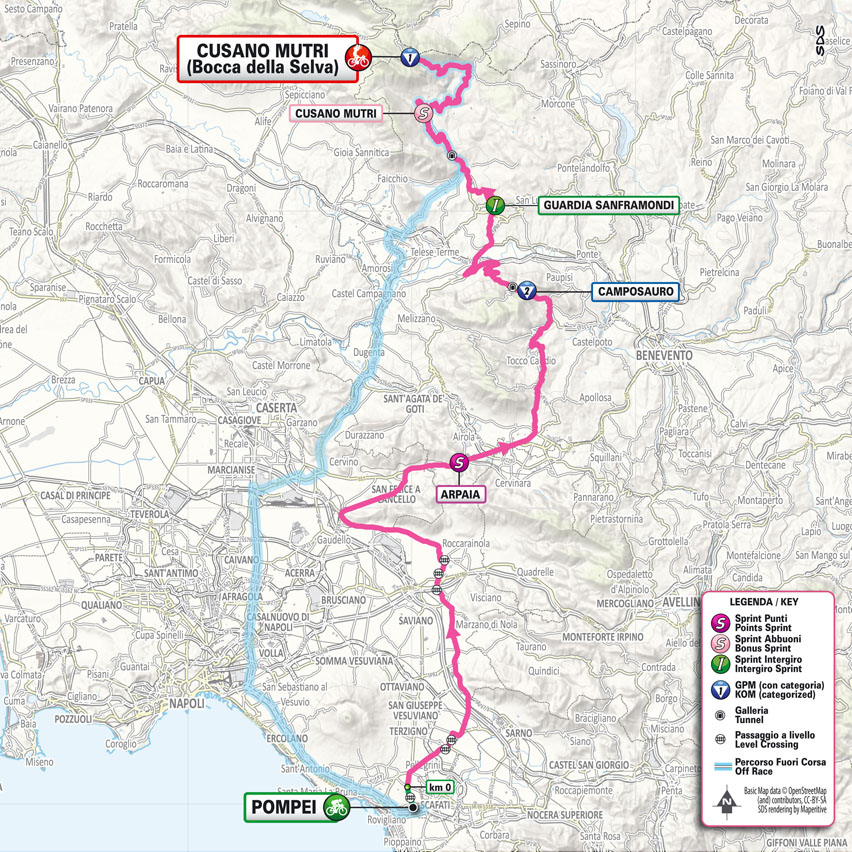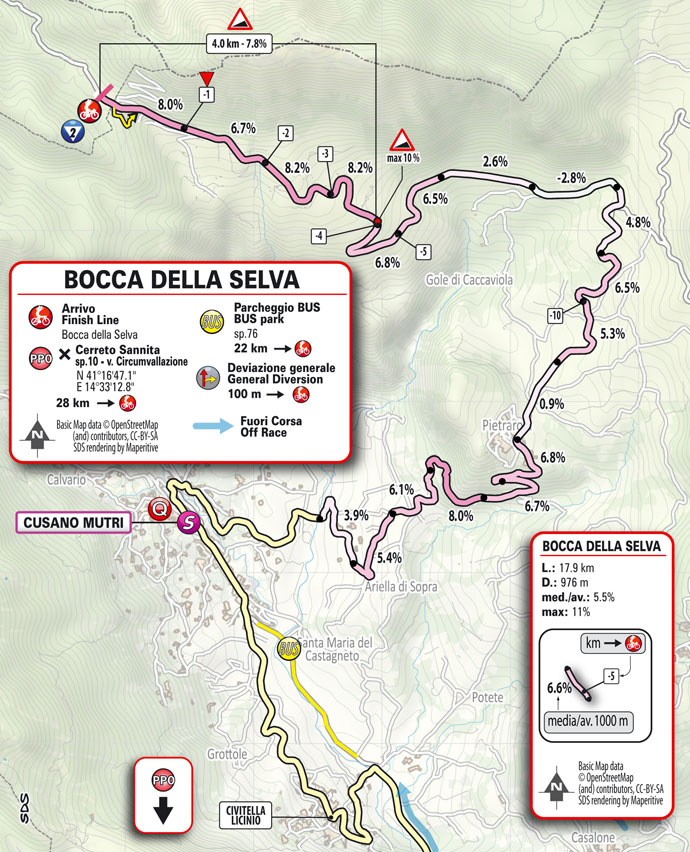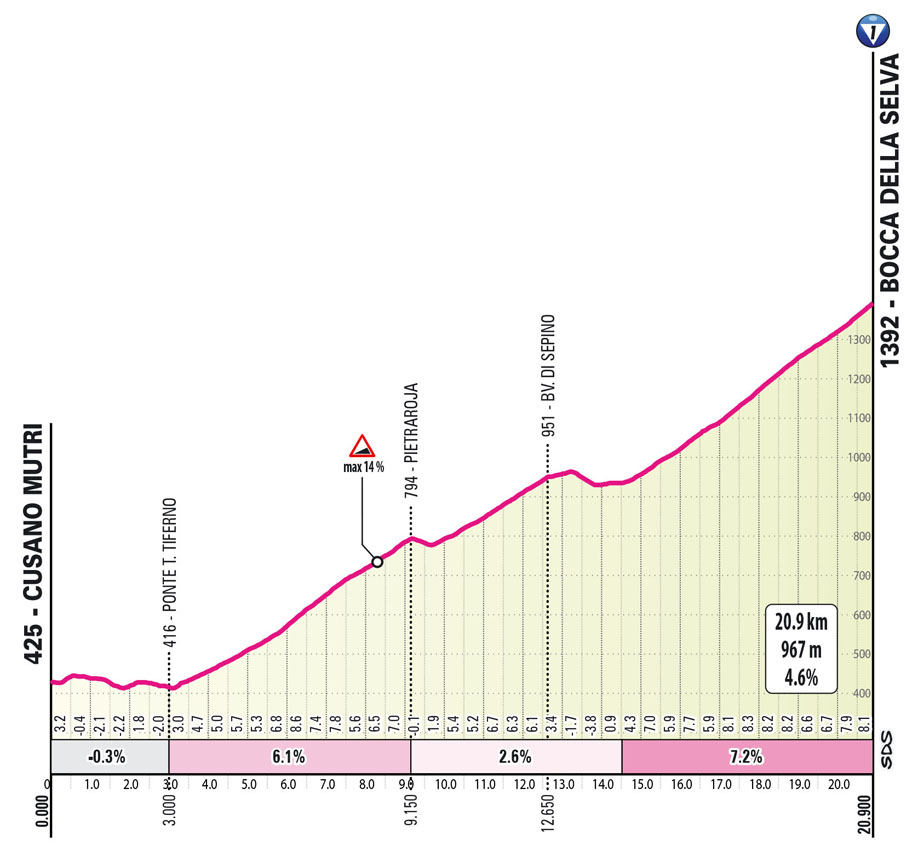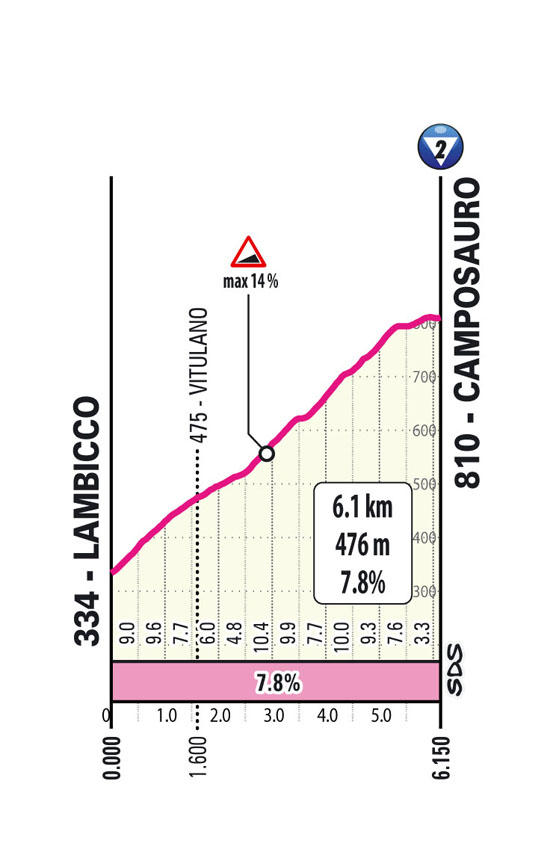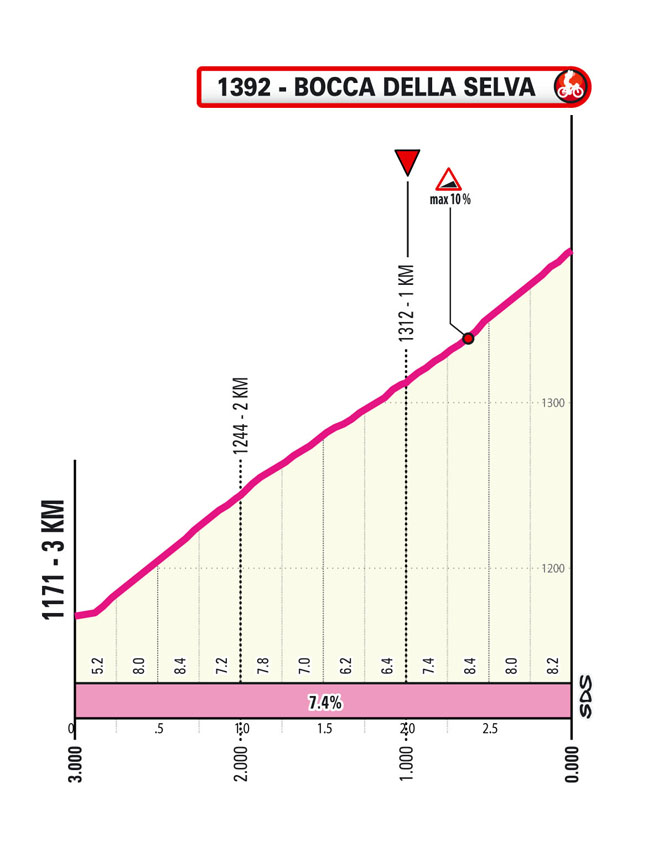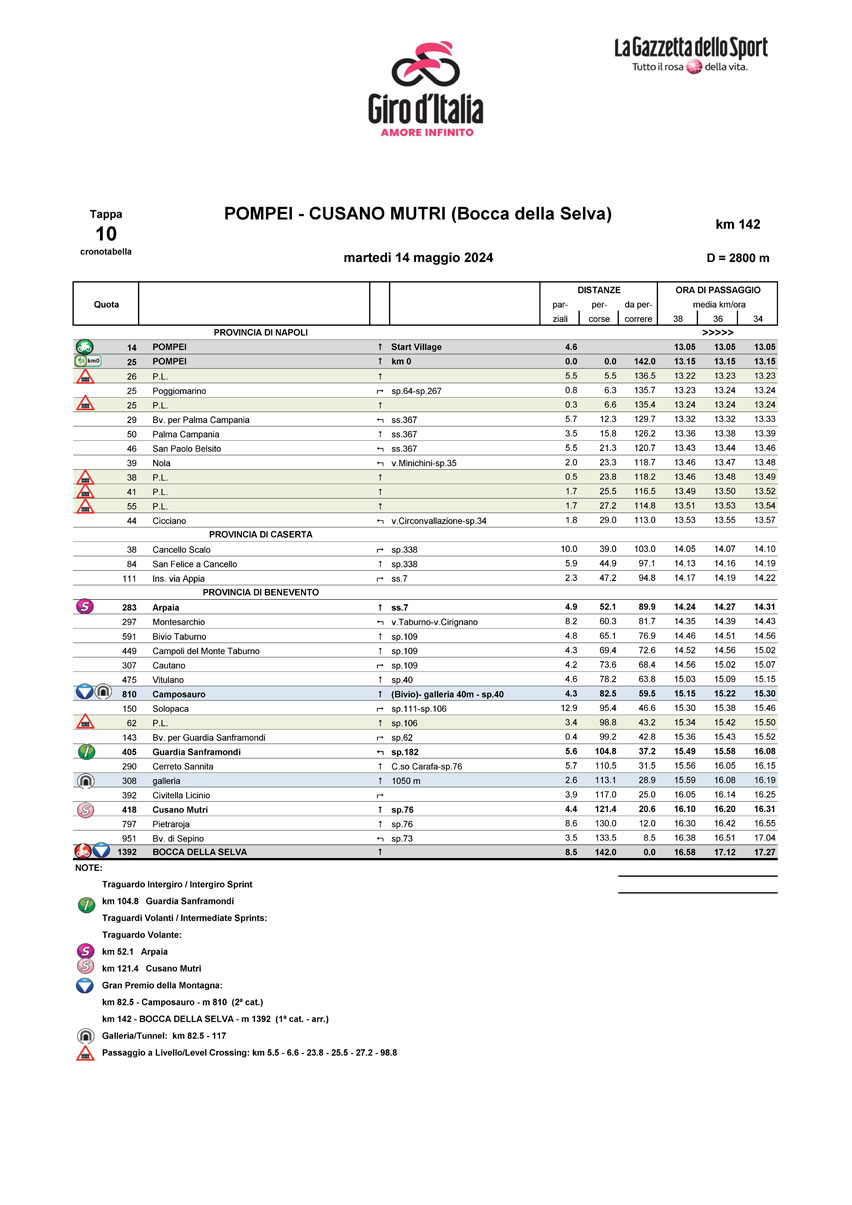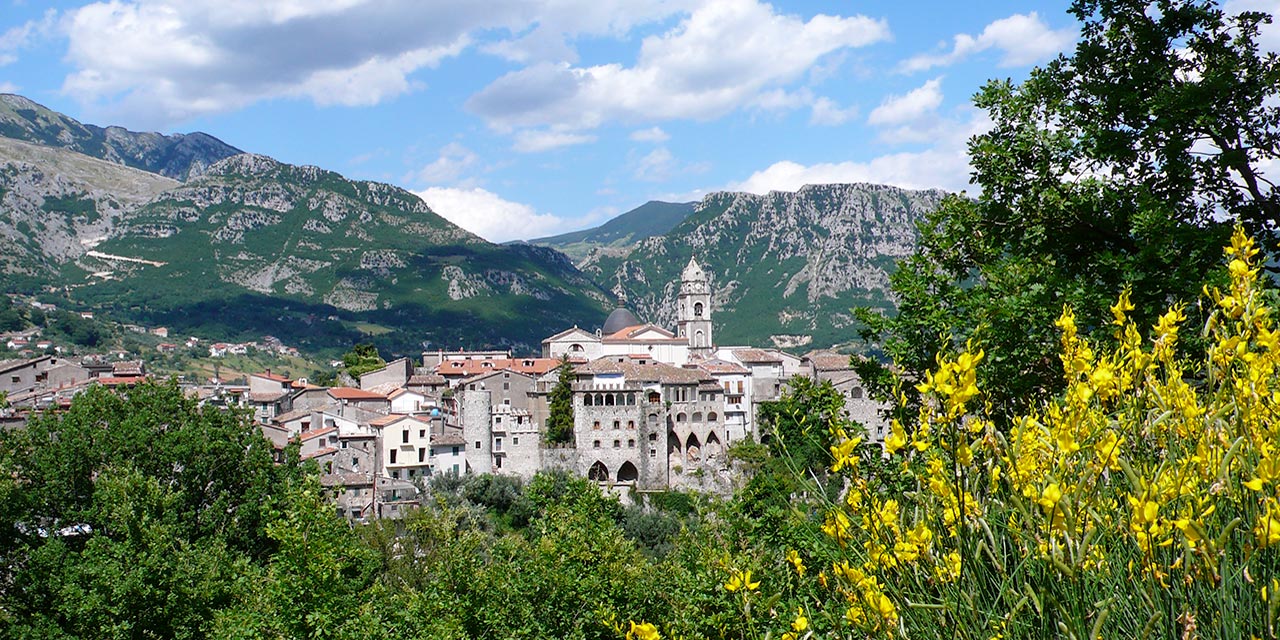
142 km - Altitude Gain 2,850m
Stage 10
Pompei -
Cusano Mutri
Tuesday 14 May 2024 142km Altitude Gain 2,850m
Total time: 3:43:50 Withdrawn: 4
Array( [0] => Array ( [type] => athletes [pos] => 1 [id] => 64 [name] => PARET PEINTRE Valentin [nome] => Valentin [cognome] => PARET PEINTRE [team] => DECATHLON AG2R LA MONDIALE TEAM [sigla_team] => DAT [val] => 3:43:50 [distacco] => 0:00 [idx] => [localita] => [abbuono] => 0:10 ) [1] => Array ( [type] => athletes [pos] => 2 [id] => 141 [name] => BARDET Romain [nome] => Romain [cognome] => BARDET [team] => TEAM DSM - FIRMENICH POSTNL [sigla_team] => DFP [val] => 3:44:19 [distacco] => 0:29 [idx] => [localita] => [abbuono] => 0:09 ) [2] => Array ( [type] => athletes [pos] => 3 [id] => 175 [name] => TRATNIK Jan [nome] => Jan [cognome] => TRATNIK [team] => TEAM VISMA - LEASE A BIKE [sigla_team] => TVL [val] => 3:44:51 [distacco] => 01:01 [idx] => [localita] => [abbuono] => 0:09 ) [3] => Array ( [type] => athletes [pos] => 4 [id] => 112 [name] => BAGIOLI Andrea [nome] => Andrea [cognome] => BAGIOLI [team] => LIDL-TREK [sigla_team] => LTK [val] => 3:45:08 [distacco] => 01:18 [idx] => [localita] => [abbuono] => ) [4] => Array ( [type] => athletes [pos] => 5 [id] => 63 [name] => PARET PEINTRE Aurelien [nome] => Aurelien [cognome] => PARET PEINTRE [team] => DECATHLON AG2R LA MONDIALE TEAM [sigla_team] => DAT [val] => 3:45:15 [distacco] => 01:25 [idx] => [localita] => [abbuono] => ) [5] => Array ( [type] => athletes [pos] => 6 [id] => 56 [name] => GESCHKE Simon [nome] => Simon [cognome] => GESCHKE [team] => COFIDIS [sigla_team] => COF [val] => 3:45:15 [distacco] => 01:25 [idx] => [localita] => [abbuono] => ) [6] => Array ( [type] => athletes [pos] => 7 [id] => 158 [name] => ZANA Filippo [nome] => Filippo [cognome] => ZANA [team] => TEAM JAYCO ALULA [sigla_team] => JAY [val] => 3:45:15 [distacco] => 01:25 [idx] => [localita] => [abbuono] => ) [7] => Array ( [type] => athletes [pos] => 8 [id] => 201 [name] => POZZOVIVO Domenico [nome] => Domenico [cognome] => POZZOVIVO [team] => VF GROUP - BARDIANI CSF- FAIZANE' [sigla_team] => VBF [val] => 3:45:15 [distacco] => 01:25 [idx] => [localita] => [abbuono] => ) [8] => Array ( [type] => athletes [pos] => 9 [id] => 13 [name] => CONCI Nicola [nome] => Nicola [cognome] => CONCI [team] => ALPECIN - DECEUNINCK [sigla_team] => ADC [val] => 3:45:31 [distacco] => 01:41 [idx] => [localita] => [abbuono] => ) [9] => Array ( [type] => athletes [pos] => 10 [id] => 71 [name] => CHAVES Esteban [nome] => Esteban [cognome] => CHAVES [team] => EF EDUCATION - EASYPOST [sigla_team] => EFE [val] => 3:45:46 [distacco] => 01:56 [idx] => [localita] => [abbuono] => ) [10] => Array ( [type] => athletes [pos] => 11 [id] => 116 [name] => LOPEZ Juan Pedro [nome] => Juan Pedro [cognome] => LOPEZ [team] => LIDL-TREK [sigla_team] => LTK [val] => 3:45:54 [distacco] => 02:04 [idx] => [localita] => [abbuono] => ) [11] => Array ( [type] => athletes [pos] => 12 [id] => 47 [name] => SCHACHMANN Maximilian [nome] => Maximilian [cognome] => SCHACHMANN [team] => BORA - HANSGROHE [sigla_team] => BOH [val] => 3:46:05 [distacco] => 02:15 [idx] => [localita] => [abbuono] => ) [12] => Array ( [type] => athletes [pos] => 13 [id] => 147 [name] => VERMAERKE Kevin [nome] => Kevin [cognome] => VERMAERKE [team] => TEAM DSM - FIRMENICH POSTNL [sigla_team] => DFP [val] => 3:46:28 [distacco] => 02:38 [idx] => [localita] => [abbuono] => ) [13] => Array ( [type] => athletes [pos] => 14 [id] => 61 [name] => O'CONNOR Ben [nome] => Ben [cognome] => O'CONNOR [team] => DECATHLON AG2R LA MONDIALE TEAM [sigla_team] => DAT [val] => 3:47:04 [distacco] => 03:14 [idx] => [localita] => [abbuono] => ) [14] => Array ( [type] => athletes [pos] => 15 [id] => 41 [name] => MARTINEZ Daniel Felipe [nome] => Daniel Felipe [cognome] => MARTINEZ [team] => BORA - HANSGROHE [sigla_team] => BOH [val] => 3:47:04 [distacco] => 03:14 [idx] => [localita] => [abbuono] => ) [15] => Array ( [type] => athletes [pos] => 16 [id] => 1 [name] => THOMAS Geraint [nome] => Geraint [cognome] => THOMAS [team] => INEOS GRENADIERS [sigla_team] => IGD [val] => 3:47:04 [distacco] => 03:14 [idx] => [localita] => [abbuono] => ) [16] => Array ( [type] => athletes [pos] => 17 [id] => 191 [name] => POGACAR Tadej [nome] => Tadej [cognome] => POGACAR [team] => UAE TEAM EMIRATES [sigla_team] => UAD [val] => 3:47:04 [distacco] => 03:14 [idx] => [localita] => [abbuono] => ) [17] => Array ( [type] => athletes [pos] => 18 [id] => 126 [name] => RUBIO Einer [nome] => Einer [cognome] => RUBIO [team] => MOVISTAR TEAM [sigla_team] => MOV [val] => 3:47:04 [distacco] => 03:14 [idx] => [localita] => [abbuono] => ) [18] => Array ( [type] => athletes [pos] => 19 [id] => 211 [name] => TIBERI Antonio [nome] => Antonio [cognome] => TIBERI [team] => BAHRAIN VICTORIOUS [sigla_team] => TBV [val] => 3:47:08 [distacco] => 03:18 [idx] => [localita] => [abbuono] => ) [19] => Array ( [type] => athletes [pos] => 20 [id] => 133 [name] => HIRT Jan [nome] => Jan [cognome] => HIRT [team] => SOUDAL QUICK - STEP [sigla_team] => SOQ [val] => 3:47:08 [distacco] => 03:18 [idx] => [localita] => [abbuono] => ) [20] => Array ( [type] => athletes [pos] => 21 [id] => 187 [name] => STORER Michael [nome] => Michael [cognome] => STORER [team] => TUDOR PRO CYCLING TEAM [sigla_team] => TUD [val] => 3:47:08 [distacco] => 03:18 [idx] => [localita] => [abbuono] => ) [21] => Array ( [type] => athletes [pos] => 22 [id] => 33 [name] => FORTUNATO Lorenzo [nome] => Lorenzo [cognome] => FORTUNATO [team] => ASTANA QAZAQSTAN TEAM [sigla_team] => AST [val] => 3:47:08 [distacco] => 03:18 [idx] => [localita] => [abbuono] => ) [22] => Array ( [type] => athletes [pos] => 23 [id] => 62 [name] => BAUDIN Alex [nome] => Alex [cognome] => BAUDIN [team] => DECATHLON AG2R LA MONDIALE TEAM [sigla_team] => DAT [val] => 3:47:08 [distacco] => 03:18 [idx] => [localita] => [abbuono] => ) [23] => Array ( [type] => athletes [pos] => 24 [id] => 202 [name] => COVILI Luca [nome] => Luca [cognome] => COVILI [team] => VF GROUP - BARDIANI CSF- FAIZANE' [sigla_team] => VBF [val] => 3:47:12 [distacco] => 03:22 [idx] => [localita] => [abbuono] => ) [24] => Array ( [type] => athletes [pos] => 25 [id] => 143 [name] => HAMILTON Christopher [nome] => Christopher [cognome] => HAMILTON [team] => TEAM DSM - FIRMENICH POSTNL [sigla_team] => DFP [val] => 3:47:15 [distacco] => 03:25 [idx] => [localita] => [abbuono] => ) [25] => Array ( [type] => athletes [pos] => 26 [id] => 176 [name] => UIJTDEBROEKS Cian [nome] => Cian [cognome] => UIJTDEBROEKS [team] => TEAM VISMA - LEASE A BIKE [sigla_team] => TVL [val] => 3:47:17 [distacco] => 03:27 [idx] => [localita] => [abbuono] => ) [26] => Array ( [type] => athletes [pos] => 27 [id] => 42 [name] => ALEOTTI Giovanni [nome] => Giovanni [cognome] => ALEOTTI [team] => BORA - HANSGROHE [sigla_team] => BOH [val] => 3:47:26 [distacco] => 03:36 [idx] => [localita] => [abbuono] => ) [27] => Array ( [type] => athletes [pos] => 28 [id] => 6 [name] => SHEFFIELD Magnus [nome] => Magnus [cognome] => SHEFFIELD [team] => INEOS GRENADIERS [sigla_team] => IGD [val] => 3:47:26 [distacco] => 03:36 [idx] => [localita] => [abbuono] => ) [28] => Array ( [type] => athletes [pos] => 29 [id] => 2 [name] => ARENSMAN Thymen [nome] => Thymen [cognome] => ARENSMAN [team] => INEOS GRENADIERS [sigla_team] => IGD [val] => 3:47:26 [distacco] => 03:36 [idx] => [localita] => [abbuono] => ) [29] => Array ( [type] => athletes [pos] => 30 [id] => 196 [name] => MAJKA Rafal [nome] => Rafal [cognome] => MAJKA [team] => UAE TEAM EMIRATES [sigla_team] => UAD [val] => 3:47:31 [distacco] => 03:41 [idx] => [localita] => [abbuono] => ) [30] => Array ( [type] => athletes [pos] => 31 [id] => 121 [name] => QUINTANA Nairo [nome] => Nairo [cognome] => QUINTANA [team] => MOVISTAR TEAM [sigla_team] => MOV [val] => 3:47:34 [distacco] => 03:44 [idx] => [localita] => [abbuono] => ) [31] => Array ( [type] => athletes [pos] => 32 [id] => 26 [name] => RIES Michel [nome] => Michel [cognome] => RIES [team] => ARKEA - B&B HOTELS [sigla_team] => ARK [val] => 3:48:25 [distacco] => 04:35 [idx] => [localita] => [abbuono] => ) [32] => Array ( [type] => athletes [pos] => 33 [id] => 214 [name] => CARUSO Damiano [nome] => Damiano [cognome] => CARUSO [team] => BAHRAIN VICTORIOUS [sigla_team] => TBV [val] => 3:48:25 [distacco] => 04:35 [idx] => [localita] => [abbuono] => ) [33] => Array ( [type] => athletes [pos] => 34 [id] => 168 [name] => PIGANZOLI Davide [nome] => Davide [cognome] => PIGANZOLI [team] => TEAM POLTI KOMETA [sigla_team] => PTK [val] => 3:49:05 [distacco] => 05:15 [idx] => [localita] => [abbuono] => ) [34] => Array ( [type] => athletes [pos] => 35 [id] => 177 [name] => VALTER Attila [nome] => Attila [cognome] => VALTER [team] => TEAM VISMA - LEASE A BIKE [sigla_team] => TVL [val] => 3:49:05 [distacco] => 05:15 [idx] => [localita] => [abbuono] => ) [35] => Array ( [type] => athletes [pos] => 36 [id] => 78 [name] => VALGREN Michael [nome] => Michael [cognome] => VALGREN [team] => EF EDUCATION - EASYPOST [sigla_team] => EFE [val] => 3:50:05 [distacco] => 06:15 [idx] => [localita] => [abbuono] => ) [36] => Array ( [type] => athletes [pos] => 37 [id] => 103 [name] => FRIGO Marco [nome] => Marco [cognome] => FRIGO [team] => ISRAEL - PREMIER TECH [sigla_team] => IPT [val] => 3:50:10 [distacco] => 06:20 [idx] => [localita] => [abbuono] => 0:01 ) [37] => Array ( [type] => athletes [pos] => 38 [id] => 194 [name] => GROSSSCHARTNER Felix [nome] => Felix [cognome] => GROSSSCHARTNER [team] => UAE TEAM EMIRATES [sigla_team] => UAD [val] => 3:50:38 [distacco] => 06:48 [idx] => [localita] => [abbuono] => ) [38] => Array ( [type] => athletes [pos] => 39 [id] => 163 [name] => BAIS Mattia [nome] => Mattia [cognome] => BAIS [team] => TEAM POLTI KOMETA [sigla_team] => PTK [val] => 3:51:00 [distacco] => 07:10 [idx] => [localita] => [abbuono] => ) [39] => Array ( [type] => athletes [pos] => 40 [id] => 198 [name] => NOVAK Domen [nome] => Domen [cognome] => NOVAK [team] => UAE TEAM EMIRATES [sigla_team] => UAD [val] => 3:52:52 [distacco] => 09:02 [idx] => [localita] => [abbuono] => ) [40] => Array ( [type] => athletes [pos] => 41 [id] => 53 [name] => CHAMPION Thomas [nome] => Thomas [cognome] => CHAMPION [team] => COFIDIS [sigla_team] => COF [val] => 3:52:52 [distacco] => 09:02 [idx] => [localita] => [abbuono] => ) [41] => Array ( [type] => athletes [pos] => 42 [id] => 5 [name] => NARVAEZ Jhonatan [nome] => Jhonatan [cognome] => NARVAEZ [team] => INEOS GRENADIERS [sigla_team] => IGD [val] => 3:52:52 [distacco] => 09:02 [idx] => [localita] => [abbuono] => ) [42] => Array ( [type] => athletes [pos] => 43 [id] => 188 [name] => STORK Florian [nome] => Florian [cognome] => STORK [team] => TUDOR PRO CYCLING TEAM [sigla_team] => TUD [val] => 3:52:52 [distacco] => 09:02 [idx] => [localita] => [abbuono] => ) [43] => Array ( [type] => athletes [pos] => 44 [id] => 216 [name] => ZAMBANINI Edoardo [nome] => Edoardo [cognome] => ZAMBANINI [team] => BAHRAIN VICTORIOUS [sigla_team] => TBV [val] => 3:52:52 [distacco] => 09:02 [idx] => [localita] => [abbuono] => ) [44] => Array ( [type] => athletes [pos] => 45 [id] => 38 [name] => VELASCO Simone [nome] => Simone [cognome] => VELASCO [team] => ASTANA QAZAQSTAN TEAM [sigla_team] => AST [val] => 3:52:52 [distacco] => 09:02 [idx] => [localita] => [abbuono] => ) [45] => Array ( [type] => athletes [pos] => 46 [id] => 122 [name] => BARTA William [nome] => William [cognome] => BARTA [team] => MOVISTAR TEAM [sigla_team] => MOV [val] => 3:52:52 [distacco] => 09:02 [idx] => [localita] => [abbuono] => ) [46] => Array ( [type] => athletes [pos] => 47 [id] => 145 [name] => LEEMREIZE Gijs [nome] => Gijs [cognome] => LEEMREIZE [team] => TEAM DSM - FIRMENICH POSTNL [sigla_team] => DFP [val] => 3:53:03 [distacco] => 09:13 [idx] => [localita] => [abbuono] => ) [47] => Array ( [type] => athletes [pos] => 48 [id] => 138 [name] => VANSEVENANT Mauri [nome] => Mauri [cognome] => VANSEVENANT [team] => SOUDAL QUICK - STEP [sigla_team] => SOQ [val] => 3:53:55 [distacco] => 10:05 [idx] => [localita] => [abbuono] => ) [48] => Array ( [type] => athletes [pos] => 49 [id] => 88 [name] => PALENI Enzo [nome] => Enzo [cognome] => PALENI [team] => GROUPAMA - FDJ [sigla_team] => GFC [val] => 3:54:07 [distacco] => 10:17 [idx] => [localita] => [abbuono] => ) [49] => Array ( [type] => athletes [pos] => 50 [id] => 37 [name] => SCARONI Christian [nome] => Christian [cognome] => SCARONI [team] => ASTANA QAZAQSTAN TEAM [sigla_team] => AST [val] => 3:56:12 [distacco] => 12:22 [idx] => [localita] => [abbuono] => ) [50] => Array ( [type] => athletes [pos] => 51 [id] => 207 [name] => TONELLI Alessandro [nome] => Alessandro [cognome] => TONELLI [team] => VF GROUP - BARDIANI CSF- FAIZANE' [sigla_team] => VBF [val] => 3:56:12 [distacco] => 12:22 [idx] => [localita] => [abbuono] => ) [51] => Array ( [type] => athletes [pos] => 52 [id] => 68 [name] => WARBASSE Lawrence [nome] => Lawrence [cognome] => WARBASSE [team] => DECATHLON AG2R LA MONDIALE TEAM [sigla_team] => DAT [val] => 3:57:09 [distacco] => 13:19 [idx] => [localita] => [abbuono] => ) [52] => Array ( [type] => athletes [pos] => 53 [id] => 35 [name] => MULUEBERHAN Henok [nome] => Henok [cognome] => MULUEBERHAN [team] => ASTANA QAZAQSTAN TEAM [sigla_team] => AST [val] => 3:57:09 [distacco] => 13:19 [idx] => [localita] => [abbuono] => ) [53] => Array ( [type] => athletes [pos] => 54 [id] => 92 [name] => CALMEJANE Lilian [nome] => Lilian [cognome] => CALMEJANE [team] => INTERMARCHE' - WANTY [sigla_team] => IWA [val] => 3:57:31 [distacco] => 13:41 [idx] => [localita] => [abbuono] => ) [54] => Array ( [type] => athletes [pos] => 55 [id] => 136 [name] => SERRY Pieter [nome] => Pieter [cognome] => SERRY [team] => SOUDAL QUICK - STEP [sigla_team] => SOQ [val] => 4:01:47 [distacco] => 17:57 [idx] => [localita] => [abbuono] => ) [55] => Array ( [type] => athletes [pos] => 56 [id] => 212 [name] => KEPPLINGER Rainer [nome] => Rainer [cognome] => KEPPLINGER [team] => BAHRAIN VICTORIOUS [sigla_team] => TBV [val] => 4:01:47 [distacco] => 17:57 [idx] => [localita] => [abbuono] => ) [56] => Array ( [type] => athletes [pos] => 57 [id] => 3 [name] => FOSS Tobias [nome] => Tobias [cognome] => FOSS [team] => INEOS GRENADIERS [sigla_team] => IGD [val] => 4:01:47 [distacco] => 17:57 [idx] => [localita] => [abbuono] => ) [57] => Array ( [type] => athletes [pos] => 58 [id] => 127 [name] => SANCHEZ Pelayo [nome] => Pelayo [cognome] => SANCHEZ [team] => MOVISTAR TEAM [sigla_team] => MOV [val] => 4:01:47 [distacco] => 17:57 [idx] => [localita] => [abbuono] => ) [58] => Array ( [type] => athletes [pos] => 59 [id] => 128 [name] => TORRES Albert [nome] => Albert [cognome] => TORRES [team] => MOVISTAR TEAM [sigla_team] => MOV [val] => 4:01:47 [distacco] => 17:57 [idx] => [localita] => [abbuono] => ) [59] => Array ( [type] => athletes [pos] => 60 [id] => 55 [name] => FERNANDEZ Ruben [nome] => Ruben [cognome] => FERNANDEZ [team] => COFIDIS [sigla_team] => COF [val] => 4:01:47 [distacco] => 17:57 [idx] => [localita] => [abbuono] => ) [60] => Array ( [type] => athletes [pos] => 61 [id] => 93 [name] => COLLEONI Kevin [nome] => Kevin [cognome] => COLLEONI [team] => INTERMARCHE' - WANTY [sigla_team] => IWA [val] => 4:01:47 [distacco] => 17:57 [idx] => [localita] => [abbuono] => ) [61] => Array ( [type] => athletes [pos] => 62 [id] => 195 [name] => LAENGEN Vegard Stake [nome] => Vegard Stake [cognome] => LAENGEN [team] => UAE TEAM EMIRATES [sigla_team] => UAD [val] => 4:01:47 [distacco] => 17:57 [idx] => [localita] => [abbuono] => ) [62] => Array ( [type] => athletes [pos] => 63 [id] => 7 [name] => SWIFT Ben [nome] => Ben [cognome] => SWIFT [team] => INEOS GRENADIERS [sigla_team] => IGD [val] => 4:01:47 [distacco] => 17:57 [idx] => [localita] => [abbuono] => ) [63] => Array ( [type] => athletes [pos] => 64 [id] => 114 [name] => GHEBREIGZABHIER Amanuel [nome] => Amanuel [cognome] => GHEBREIGZABHIER [team] => LIDL-TREK [sigla_team] => LTK [val] => 4:02:28 [distacco] => 18:38 [idx] => [localita] => [abbuono] => ) [64] => Array ( [type] => athletes [pos] => 65 [id] => 85 [name] => GERMANI Lorenzo [nome] => Lorenzo [cognome] => GERMANI [team] => GROUPAMA - FDJ [sigla_team] => GFC [val] => 4:02:35 [distacco] => 18:45 [idx] => [localita] => [abbuono] => ) [65] => Array ( [type] => athletes [pos] => 66 [id] => 217 [name] => SUTTERLIN Jasha [nome] => Jasha [cognome] => SUTTERLIN [team] => BAHRAIN VICTORIOUS [sigla_team] => TBV [val] => 4:02:35 [distacco] => 18:45 [idx] => [localita] => [abbuono] => ) [66] => Array ( [type] => athletes [pos] => 67 [id] => 162 [name] => BAIS Davide [nome] => Davide [cognome] => BAIS [team] => TEAM POLTI KOMETA [sigla_team] => PTK [val] => 4:02:35 [distacco] => 18:45 [idx] => [localita] => [abbuono] => ) [67] => Array ( [type] => athletes [pos] => 68 [id] => 165 [name] => MAESTRI Mirco [nome] => Mirco [cognome] => MAESTRI [team] => TEAM POLTI KOMETA [sigla_team] => PTK [val] => 4:02:35 [distacco] => 18:45 [idx] => [localita] => [abbuono] => ) [68] => Array ( [type] => athletes [pos] => 69 [id] => 83 [name] => BARTHE Cyril [nome] => Cyril [cognome] => BARTHE [team] => GROUPAMA - FDJ [sigla_team] => GFC [val] => 4:02:35 [distacco] => 18:45 [idx] => [localita] => [abbuono] => ) [69] => Array ( [type] => athletes [pos] => 70 [id] => 36 [name] => PRONSKIY Vadim [nome] => Vadim [cognome] => PRONSKIY [team] => ASTANA QAZAQSTAN TEAM [sigla_team] => AST [val] => 4:02:35 [distacco] => 18:45 [idx] => [localita] => [abbuono] => ) [70] => Array ( [type] => athletes [pos] => 71 [id] => 65 [name] => TOUZE Damien [nome] => Damien [cognome] => TOUZE [team] => DECATHLON AG2R LA MONDIALE TEAM [sigla_team] => DAT [val] => 4:02:38 [distacco] => 18:48 [idx] => [localita] => [abbuono] => ) [71] => Array ( [type] => athletes [pos] => 72 [id] => 73 [name] => DE BOD Stefan [nome] => Stefan [cognome] => DE BOD [team] => EF EDUCATION - EASYPOST [sigla_team] => EFE [val] => 4:06:19 [distacco] => 22:29 [idx] => [localita] => [abbuono] => ) [72] => Array ( [type] => athletes [pos] => 73 [id] => 181 [name] => TRENTIN Matteo [nome] => Matteo [cognome] => TRENTIN [team] => TUDOR PRO CYCLING TEAM [sigla_team] => TUD [val] => 4:07:09 [distacco] => 23:19 [idx] => [localita] => [abbuono] => ) [73] => Array ( [type] => athletes [pos] => 74 [id] => 203 [name] => FIORELLI Filippo [nome] => Filippo [cognome] => FIORELLI [team] => VF GROUP - BARDIANI CSF- FAIZANE' [sigla_team] => VBF [val] => 4:07:35 [distacco] => 23:45 [idx] => [localita] => [abbuono] => 0:03 ) [74] => Array ( [type] => athletes [pos] => 75 [id] => 57 [name] => THOMAS Benjamin [nome] => Benjamin [cognome] => THOMAS [team] => COFIDIS [sigla_team] => COF [val] => 4:07:35 [distacco] => 23:45 [idx] => [localita] => [abbuono] => ) [75] => Array ( [type] => athletes [pos] => 76 [id] => 107 [name] => SCHULTZ Nicholas [nome] => Nicholas [cognome] => SCHULTZ [team] => ISRAEL - PREMIER TECH [sigla_team] => IPT [val] => 4:07:35 [distacco] => 23:45 [idx] => [localita] => [abbuono] => ) [76] => Array ( [type] => athletes [pos] => 77 [id] => 8 [name] => SWIFT Connor [nome] => Connor [cognome] => SWIFT [team] => INEOS GRENADIERS [sigla_team] => IGD [val] => 4:07:35 [distacco] => 23:45 [idx] => [localita] => [abbuono] => ) [77] => Array ( [type] => athletes [pos] => 78 [id] => 75 [name] => HONORE' Frolich Mikkel [nome] => Frolich Mikkel [cognome] => HONORE' [team] => EF EDUCATION - EASYPOST [sigla_team] => EFE [val] => 4:07:35 [distacco] => 23:45 [idx] => [localita] => [abbuono] => ) [78] => Array ( [type] => athletes [pos] => 79 [id] => 131 [name] => ALAPHILIPPE Julian [nome] => Julian [cognome] => ALAPHILIPPE [team] => SOUDAL QUICK - STEP [sigla_team] => SOQ [val] => 4:07:35 [distacco] => 23:45 [idx] => [localita] => [abbuono] => ) [79] => Array ( [type] => athletes [pos] => 80 [id] => 215 [name] => PASQUALON Andrea [nome] => Andrea [cognome] => PASQUALON [team] => BAHRAIN VICTORIOUS [sigla_team] => TBV [val] => 4:08:27 [distacco] => 24:37 [idx] => [localita] => [abbuono] => ) [80] => Array ( [type] => athletes [pos] => 81 [id] => 32 [name] => BALLERINI Davide [nome] => Davide [cognome] => BALLERINI [team] => ASTANA QAZAQSTAN TEAM [sigla_team] => AST [val] => 4:08:27 [distacco] => 24:37 [idx] => [localita] => [abbuono] => ) [81] => Array ( [type] => athletes [pos] => 82 [id] => 66 [name] => TRONCHON Bastien [nome] => Bastien [cognome] => TRONCHON [team] => DECATHLON AG2R LA MONDIALE TEAM [sigla_team] => DAT [val] => 4:09:10 [distacco] => 25:20 [idx] => [localita] => [abbuono] => ) [82] => Array ( [type] => athletes [pos] => 83 [id] => 82 [name] => ASKEY Lewis [nome] => Lewis [cognome] => ASKEY [team] => GROUPAMA - FDJ [sigla_team] => GFC [val] => 4:10:48 [distacco] => 26:58 [idx] => [localita] => [abbuono] => ) [83] => Array ( [type] => athletes [pos] => 84 [id] => 81 [name] => PITHIE Laurence [nome] => Laurence [cognome] => PITHIE [team] => GROUPAMA - FDJ [sigla_team] => GFC [val] => 4:10:48 [distacco] => 26:58 [idx] => [localita] => [abbuono] => ) [84] => Array ( [type] => athletes [pos] => 85 [id] => 44 [name] => KOCH Jonas [nome] => Jonas [cognome] => KOCH [team] => BORA - HANSGROHE [sigla_team] => BOH [val] => 4:11:34 [distacco] => 27:44 [idx] => [localita] => [abbuono] => ) [85] => Array ( [type] => athletes [pos] => 86 [id] => 43 [name] => GAMPER Patrick [nome] => Patrick [cognome] => GAMPER [team] => BORA - HANSGROHE [sigla_team] => BOH [val] => 4:11:34 [distacco] => 27:44 [idx] => [localita] => [abbuono] => ) [86] => Array ( [type] => athletes [pos] => 87 [id] => 67 [name] => VENDRAME Andrea [nome] => Andrea [cognome] => VENDRAME [team] => DECATHLON AG2R LA MONDIALE TEAM [sigla_team] => DAT [val] => 4:11:46 [distacco] => 27:56 [idx] => [localita] => [abbuono] => ) [87] => Array ( [type] => athletes [pos] => 88 [id] => 151 [name] => DE MARCHI Alessandro [nome] => Alessandro [cognome] => DE MARCHI [team] => TEAM JAYCO ALULA [sigla_team] => JAY [val] => 4:12:03 [distacco] => 28:13 [idx] => [localita] => [abbuono] => ) [88] => Array ( [type] => athletes [pos] => 89 [id] => 15 [name] => JANSSENS Jimmy [nome] => Jimmy [cognome] => JANSSENS [team] => ALPECIN - DECEUNINCK [sigla_team] => ADC [val] => 4:12:09 [distacco] => 28:19 [idx] => [localita] => [abbuono] => ) [89] => Array ( [type] => athletes [pos] => 90 [id] => 86 [name] => LE GAC Olivier [nome] => Olivier [cognome] => LE GAC [team] => GROUPAMA - FDJ [sigla_team] => GFC [val] => 4:12:14 [distacco] => 28:24 [idx] => [localita] => [abbuono] => ) [90] => Array ( [type] => athletes [pos] => 91 [id] => 14 [name] => HERMANS Quinten [nome] => Quinten [cognome] => HERMANS [team] => ALPECIN - DECEUNINCK [sigla_team] => ADC [val] => 4:12:35 [distacco] => 28:45 [idx] => [localita] => [abbuono] => ) [91] => Array ( [type] => athletes [pos] => 92 [id] => 17 [name] => PLANCKAERT Edward [nome] => Edward [cognome] => PLANCKAERT [team] => ALPECIN - DECEUNINCK [sigla_team] => ADC [val] => 4:13:16 [distacco] => 29:26 [idx] => [localita] => [abbuono] => ) [92] => Array ( [type] => athletes [pos] => 93 [id] => 12 [name] => BAYER Tobias [nome] => Tobias [cognome] => BAYER [team] => ALPECIN - DECEUNINCK [sigla_team] => ADC [val] => 4:13:16 [distacco] => 29:26 [idx] => [localita] => [abbuono] => ) [93] => Array ( [type] => athletes [pos] => 94 [id] => 11 [name] => GROVES Kaden [nome] => Kaden [cognome] => GROVES [team] => ALPECIN - DECEUNINCK [sigla_team] => ADC [val] => 4:13:16 [distacco] => 29:26 [idx] => [localita] => [abbuono] => ) [94] => Array ( [type] => athletes [pos] => 95 [id] => 102 [name] => CLARKE Simon [nome] => Simon [cognome] => CLARKE [team] => ISRAEL - PREMIER TECH [sigla_team] => IPT [val] => 4:13:16 [distacco] => 29:26 [idx] => [localita] => [abbuono] => ) [95] => Array ( [type] => athletes [pos] => 96 [id] => 48 [name] => VAN POPPEL Danny [nome] => Danny [cognome] => VAN POPPEL [team] => BORA - HANSGROHE [sigla_team] => BOH [val] => 4:13:16 [distacco] => 29:26 [idx] => [localita] => [abbuono] => ) [96] => Array ( [type] => athletes [pos] => 97 [id] => 46 [name] => MULLEN Ryan [nome] => Ryan [cognome] => MULLEN [team] => BORA - HANSGROHE [sigla_team] => BOH [val] => 4:13:16 [distacco] => 29:26 [idx] => [localita] => [abbuono] => ) [97] => Array ( [type] => athletes [pos] => 98 [id] => 166 [name] => MUNOZ Francisco [nome] => Francisco [cognome] => MUNOZ [team] => TEAM POLTI KOMETA [sigla_team] => PTK [val] => 4:13:16 [distacco] => 29:26 [idx] => [localita] => [abbuono] => ) [98] => Array ( [type] => athletes [pos] => 99 [id] => 18 [name] => VAN DEN BOSSCHE Fabio [nome] => Fabio [cognome] => VAN DEN BOSSCHE [team] => ALPECIN - DECEUNINCK [sigla_team] => ADC [val] => 4:13:16 [distacco] => 29:26 [idx] => [localita] => [abbuono] => ) [99] => Array ( [type] => athletes [pos] => 100 [id] => 125 [name] => MILESI Lorenzo [nome] => Lorenzo [cognome] => MILESI [team] => MOVISTAR TEAM [sigla_team] => MOV [val] => 4:13:16 [distacco] => 29:26 [idx] => [localita] => [abbuono] => ) [100] => Array ( [type] => athletes [pos] => 101 [id] => 193 [name] => BJERG Mikkel [nome] => Mikkel [cognome] => BJERG [team] => UAE TEAM EMIRATES [sigla_team] => UAD [val] => 4:14:28 [distacco] => 30:38 [idx] => [localita] => [abbuono] => ) [101] => Array ( [type] => athletes [pos] => 102 [id] => 4 [name] => GANNA Filippo [nome] => Filippo [cognome] => GANNA [team] => INEOS GRENADIERS [sigla_team] => IGD [val] => 4:17:52 [distacco] => 34:02 [idx] => [localita] => [abbuono] => ) [102] => Array ( [type] => athletes [pos] => 103 [id] => 167 [name] => PIETROBON Andrea [nome] => Andrea [cognome] => PIETROBON [team] => TEAM POLTI KOMETA [sigla_team] => PTK [val] => 4:18:51 [distacco] => 35:01 [idx] => [localita] => [abbuono] => ) [103] => Array ( [type] => athletes [pos] => 104 [id] => 95 [name] => MIHKELS Madis [nome] => Madis [cognome] => MIHKELS [team] => INTERMARCHE' - WANTY [sigla_team] => IWA [val] => 4:18:51 [distacco] => 35:01 [idx] => [localita] => [abbuono] => ) [104] => Array ( [type] => athletes [pos] => 105 [id] => 161 [name] => FABBRO Matteo [nome] => Matteo [cognome] => FABBRO [team] => TEAM POLTI KOMETA [sigla_team] => PTK [val] => 4:18:51 [distacco] => 35:01 [idx] => [localita] => [abbuono] => ) [105] => Array ( [type] => athletes [pos] => 106 [id] => 84 [name] => DAVY Clement [nome] => Clement [cognome] => DAVY [team] => GROUPAMA - FDJ [sigla_team] => GFC [val] => 4:18:51 [distacco] => 35:01 [idx] => [localita] => [abbuono] => ) [106] => Array ( [type] => athletes [pos] => 107 [id] => 156 [name] => PLAPP Lucas [nome] => Lucas [cognome] => PLAPP [team] => TEAM JAYCO ALULA [sigla_team] => JAY [val] => 4:18:51 [distacco] => 35:01 [idx] => [localita] => [abbuono] => ) [107] => Array ( [type] => athletes [pos] => 108 [id] => 208 [name] => ZANONCELLO Enrico [nome] => Enrico [cognome] => ZANONCELLO [team] => VF GROUP - BARDIANI CSF- FAIZANE' [sigla_team] => VBF [val] => 4:18:51 [distacco] => 35:01 [idx] => [localita] => [abbuono] => ) [108] => Array ( [type] => athletes [pos] => 109 [id] => 111 [name] => MILAN Jonathan [nome] => Jonathan [cognome] => MILAN [team] => LIDL-TREK [sigla_team] => LTK [val] => 4:18:51 [distacco] => 35:01 [idx] => [localita] => [abbuono] => ) [109] => Array ( [type] => athletes [pos] => 110 [id] => 54 [name] => DEBEAUMARCHE Nicolas [nome] => Nicolas [cognome] => DEBEAUMARCHE [team] => COFIDIS [sigla_team] => COF [val] => 4:18:51 [distacco] => 35:01 [idx] => [localita] => [abbuono] => ) [110] => Array ( [type] => athletes [pos] => 111 [id] => 164 [name] => LONARDI Giovanni [nome] => Giovanni [cognome] => LONARDI [team] => TEAM POLTI KOMETA [sigla_team] => PTK [val] => 4:18:51 [distacco] => 35:01 [idx] => [localita] => [abbuono] => ) [111] => Array ( [type] => athletes [pos] => 112 [id] => 76 [name] => PICCOLO Andrea [nome] => Andrea [cognome] => PICCOLO [team] => EF EDUCATION - EASYPOST [sigla_team] => EFE [val] => 4:18:51 [distacco] => 35:01 [idx] => [localita] => [abbuono] => ) [112] => Array ( [type] => athletes [pos] => 113 [id] => 182 [name] => DAINESE Alberto [nome] => Alberto [cognome] => DAINESE [team] => TUDOR PRO CYCLING TEAM [sigla_team] => TUD [val] => 4:18:51 [distacco] => 35:01 [idx] => [localita] => [abbuono] => ) [113] => Array ( [type] => athletes [pos] => 114 [id] => 87 [name] => LIENHARD Fabian [nome] => Fabian [cognome] => LIENHARD [team] => GROUPAMA - FDJ [sigla_team] => GFC [val] => 4:18:51 [distacco] => 35:01 [idx] => [localita] => [abbuono] => ) [114] => Array ( [type] => athletes [pos] => 115 [id] => 25 [name] => GRONDIN Donavan [nome] => Donavan [cognome] => GRONDIN [team] => ARKEA - B&B HOTELS [sigla_team] => ARK [val] => 4:18:51 [distacco] => 35:01 [idx] => [localita] => [abbuono] => ) [115] => Array ( [type] => athletes [pos] => 116 [id] => 21 [name] => BIERMANS Jenthe [nome] => Jenthe [cognome] => BIERMANS [team] => ARKEA - B&B HOTELS [sigla_team] => ARK [val] => 4:18:51 [distacco] => 35:01 [idx] => [localita] => [abbuono] => ) [116] => Array ( [type] => athletes [pos] => 117 [id] => 183 [name] => FROIDEVAUX Robin [nome] => Robin [cognome] => FROIDEVAUX [team] => TUDOR PRO CYCLING TEAM [sigla_team] => TUD [val] => 4:18:51 [distacco] => 35:01 [idx] => [localita] => [abbuono] => ) [117] => Array ( [type] => athletes [pos] => 118 [id] => 206 [name] => TAROZZI Manuele [nome] => Manuele [cognome] => TAROZZI [team] => VF GROUP - BARDIANI CSF- FAIZANE' [sigla_team] => VBF [val] => 4:18:51 [distacco] => 35:01 [idx] => [localita] => [abbuono] => ) [118] => Array ( [type] => athletes [pos] => 119 [id] => 137 [name] => VAN LERBERGHE Bert [nome] => Bert [cognome] => VAN LERBERGHE [team] => SOUDAL QUICK - STEP [sigla_team] => SOQ [val] => 4:18:51 [distacco] => 35:01 [idx] => [localita] => [abbuono] => ) [119] => Array ( [type] => athletes [pos] => 120 [id] => 117 [name] => STUYVEN Jasper [nome] => Jasper [cognome] => STUYVEN [team] => LIDL-TREK [sigla_team] => LTK [val] => 4:18:51 [distacco] => 35:01 [idx] => [localita] => [abbuono] => ) [120] => Array ( [type] => athletes [pos] => 121 [id] => 123 [name] => CIMOLAI Davide [nome] => Davide [cognome] => CIMOLAI [team] => MOVISTAR TEAM [sigla_team] => MOV [val] => 4:18:51 [distacco] => 35:01 [idx] => [localita] => [abbuono] => ) [121] => Array ( [type] => athletes [pos] => 122 [id] => 135 [name] => MERLIER Tim [nome] => Tim [cognome] => MERLIER [team] => SOUDAL QUICK - STEP [sigla_team] => SOQ [val] => 4:18:51 [distacco] => 35:01 [idx] => [localita] => [abbuono] => ) [122] => Array ( [type] => athletes [pos] => 123 [id] => 115 [name] => HOOLE Daan [nome] => Daan [cognome] => HOOLE [team] => LIDL-TREK [sigla_team] => LTK [val] => 4:18:51 [distacco] => 35:01 [idx] => [localita] => [abbuono] => ) [123] => Array ( [type] => athletes [pos] => 124 [id] => 134 [name] => LAMPERTI Luke [nome] => Luke [cognome] => LAMPERTI [team] => SOUDAL QUICK - STEP [sigla_team] => SOQ [val] => 4:18:51 [distacco] => 35:01 [idx] => [localita] => [abbuono] => ) [124] => Array ( [type] => athletes [pos] => 125 [id] => 98 [name] => VAN SINTMAARTENSDIJK Roel [nome] => Roel [cognome] => VAN SINTMAARTENSDIJK [team] => INTERMARCHE' - WANTY [sigla_team] => IWA [val] => 4:18:51 [distacco] => 35:01 [idx] => [localita] => [abbuono] => ) [125] => Array ( [type] => athletes [pos] => 126 [id] => 172 [name] => AFFINI Edoardo [nome] => Edoardo [cognome] => AFFINI [team] => TEAM VISMA - LEASE A BIKE [sigla_team] => TVL [val] => 4:18:51 [distacco] => 35:01 [idx] => [localita] => [abbuono] => ) [126] => Array ( [type] => athletes [pos] => 127 [id] => 94 [name] => DE POOTER Dries [nome] => Dries [cognome] => DE POOTER [team] => INTERMARCHE' - WANTY [sigla_team] => IWA [val] => 4:18:51 [distacco] => 35:01 [idx] => [localita] => [abbuono] => ) [127] => Array ( [type] => athletes [pos] => 128 [id] => 142 [name] => ANDRESEN Lund Tobias [nome] => Lund Tobias [cognome] => ANDRESEN [team] => TEAM DSM - FIRMENICH POSTNL [sigla_team] => DFP [val] => 4:18:51 [distacco] => 35:01 [idx] => [localita] => [abbuono] => ) [128] => Array ( [type] => athletes [pos] => 129 [id] => 24 [name] => DEKKER David [nome] => David [cognome] => DEKKER [team] => ARKEA - B&B HOTELS [sigla_team] => ARK [val] => 4:18:54 [distacco] => 35:04 [idx] => [localita] => [abbuono] => ) [129] => Array ( [type] => athletes [pos] => 130 [id] => 155 [name] => MEZGEC Luka [nome] => Luka [cognome] => MEZGEC [team] => TEAM JAYCO ALULA [sigla_team] => JAY [val] => 4:18:54 [distacco] => 35:04 [idx] => [localita] => [abbuono] => ) [130] => Array ( [type] => athletes [pos] => 131 [id] => 27 [name] => RIOU Alan [nome] => Alan [cognome] => RIOU [team] => ARKEA - B&B HOTELS [sigla_team] => ARK [val] => 4:18:54 [distacco] => 35:04 [idx] => [localita] => [abbuono] => ) [131] => Array ( [type] => athletes [pos] => 132 [id] => 72 [name] => CEPEDA Jefferson [nome] => Jefferson [cognome] => CEPEDA [team] => EF EDUCATION - EASYPOST [sigla_team] => EFE [val] => 4:18:54 [distacco] => 35:04 [idx] => [localita] => [abbuono] => ) [132] => Array ( [type] => athletes [pos] => 133 [id] => 23 [name] => COSTIOU Ewen [nome] => Ewen [cognome] => COSTIOU [team] => ARKEA - B&B HOTELS [sigla_team] => ARK [val] => 4:18:54 [distacco] => 35:04 [idx] => [localita] => [abbuono] => ) [133] => Array ( [type] => athletes [pos] => 134 [id] => 154 [name] => HEPBURN Michael [nome] => Michael [cognome] => HEPBURN [team] => TEAM JAYCO ALULA [sigla_team] => JAY [val] => 4:18:54 [distacco] => 35:04 [idx] => [localita] => [abbuono] => ) [134] => Array ( [type] => athletes [pos] => 135 [id] => 22 [name] => BARRE Louis [nome] => Louis [cognome] => BARRE [team] => ARKEA - B&B HOTELS [sigla_team] => ARK [val] => 4:18:54 [distacco] => 35:04 [idx] => [localita] => [abbuono] => ) [135] => Array ( [type] => athletes [pos] => 136 [id] => 178 [name] => VAN DIJKE Tim [nome] => Tim [cognome] => VAN DIJKE [team] => TEAM VISMA - LEASE A BIKE [sigla_team] => TVL [val] => 4:18:54 [distacco] => 35:04 [idx] => [localita] => [abbuono] => ) [136] => Array ( [type] => athletes [pos] => 137 [id] => 77 [name] => STEINHAUSER Georg [nome] => Georg [cognome] => STEINHAUSER [team] => EF EDUCATION - EASYPOST [sigla_team] => EFE [val] => 4:18:54 [distacco] => 35:04 [idx] => [localita] => [abbuono] => ) [137] => Array ( [type] => athletes [pos] => 138 [id] => 97 [name] => SMITH Dion [nome] => Dion [cognome] => SMITH [team] => INTERMARCHE' - WANTY [sigla_team] => IWA [val] => 4:18:54 [distacco] => 35:04 [idx] => [localita] => [abbuono] => ) [138] => Array ( [type] => athletes [pos] => 139 [id] => 153 [name] => EWAN Caleb [nome] => Caleb [cognome] => EWAN [team] => TEAM JAYCO ALULA [sigla_team] => JAY [val] => 4:18:54 [distacco] => 35:04 [idx] => [localita] => [abbuono] => ) [139] => Array ( [type] => athletes [pos] => 140 [id] => 157 [name] => WALSCHEID Maximilian [nome] => Maximilian [cognome] => WALSCHEID [team] => TEAM JAYCO ALULA [sigla_team] => JAY [val] => 4:18:54 [distacco] => 35:04 [idx] => [localita] => [abbuono] => ) [140] => Array ( [type] => athletes [pos] => 141 [id] => 51 [name] => OLDANI Stefano [nome] => Stefano [cognome] => OLDANI [team] => COFIDIS [sigla_team] => COF [val] => 4:18:54 [distacco] => 35:04 [idx] => [localita] => [abbuono] => ) [141] => Array ( [type] => athletes [pos] => 142 [id] => 184 [name] => KAMP Alexander [nome] => Alexander [cognome] => KAMP [team] => TUDOR PRO CYCLING TEAM [sigla_team] => TUD [val] => 4:18:54 [distacco] => 35:04 [idx] => [localita] => [abbuono] => ) [142] => Array ( [type] => athletes [pos] => 143 [id] => 28 [name] => VERRE Alessandro [nome] => Alessandro [cognome] => VERRE [team] => ARKEA - B&B HOTELS [sigla_team] => ARK [val] => 4:18:54 [distacco] => 35:04 [idx] => [localita] => [abbuono] => ) [143] => Array ( [type] => athletes [pos] => 144 [id] => 146 [name] => VAN DEN BERG Julius [nome] => Julius [cognome] => VAN DEN BERG [team] => TEAM DSM - FIRMENICH POSTNL [sigla_team] => DFP [val] => 4:18:54 [distacco] => 35:04 [idx] => [localita] => [abbuono] => ) [144] => Array ( [type] => athletes [pos] => 145 [id] => 52 [name] => ANIOLKOWSKI Stanislaw [nome] => Stanislaw [cognome] => ANIOLKOWSKI [team] => COFIDIS [sigla_team] => COF [val] => 4:18:54 [distacco] => 35:04 [idx] => [localita] => [abbuono] => ) [145] => Array ( [type] => athletes [pos] => 146 [id] => 16 [name] => KIELICH Timo [nome] => Timo [cognome] => KIELICH [team] => ALPECIN - DECEUNINCK [sigla_team] => ADC [val] => 4:18:54 [distacco] => 35:04 [idx] => [localita] => [abbuono] => ) [146] => Array ( [type] => athletes [pos] => 147 [id] => 58 [name] => WOOD Harrison [nome] => Harrison [cognome] => WOOD [team] => COFIDIS [sigla_team] => COF [val] => 4:18:54 [distacco] => 35:04 [idx] => [localita] => [abbuono] => ) [147] => Array ( [type] => athletes [pos] => 148 [id] => 205 [name] => PELLIZZARI Giulio [nome] => Giulio [cognome] => PELLIZZARI [team] => VF GROUP - BARDIANI CSF- FAIZANE' [sigla_team] => VBF [val] => 4:18:54 [distacco] => 35:04 [idx] => [localita] => [abbuono] => ) [148] => Array ( [type] => athletes [pos] => 149 [id] => 144 [name] => JAKOBSEN Fabio [nome] => Fabio [cognome] => JAKOBSEN [team] => TEAM DSM - FIRMENICH POSTNL [sigla_team] => DFP [val] => 4:18:54 [distacco] => 35:04 [idx] => [localita] => [abbuono] => ) [149] => Array ( [type] => athletes [pos] => 150 [id] => 204 [name] => MARCELLUSI Martin [nome] => Martin [cognome] => MARCELLUSI [team] => VF GROUP - BARDIANI CSF- FAIZANE' [sigla_team] => VBF [val] => 4:18:54 [distacco] => 35:04 [idx] => [localita] => [abbuono] => ) [150] => Array ( [type] => athletes [pos] => 151 [id] => 104 [name] => HOFSTETTER Hugo [nome] => Hugo [cognome] => HOFSTETTER [team] => ISRAEL - PREMIER TECH [sigla_team] => IPT [val] => 4:19:17 [distacco] => 35:27 [idx] => [localita] => [abbuono] => ) [151] => Array ( [type] => athletes [pos] => 152 [id] => 213 [name] => BAUHAUS Phil [nome] => Phil [cognome] => BAUHAUS [team] => BAHRAIN VICTORIOUS [sigla_team] => TBV [val] => 4:19:29 [distacco] => 35:39 [idx] => [localita] => [abbuono] => ) [152] => Array ( [type] => athletes [pos] => 153 [id] => 124 [name] => GAVIRIA Fernando [nome] => Fernando [cognome] => GAVIRIA [team] => MOVISTAR TEAM [sigla_team] => MOV [val] => 4:19:32 [distacco] => 35:42 [idx] => [localita] => [abbuono] => ) [153] => Array ( [type] => athletes [pos] => 154 [id] => 118 [name] => THEUNS Edward [nome] => Edward [cognome] => THEUNS [team] => LIDL-TREK [sigla_team] => LTK [val] => 4:20:03 [distacco] => 36:13 [idx] => [localita] => [abbuono] => ) [154] => Array ( [type] => athletes [pos] => 155 [id] => 113 [name] => CONSONNI Simone [nome] => Simone [cognome] => CONSONNI [team] => LIDL-TREK [sigla_team] => LTK [val] => 4:20:03 [distacco] => 36:13 [idx] => [localita] => [abbuono] => ) [155] => Array ( [type] => athletes [pos] => 156 [id] => 132 [name] => CERNY Josef [nome] => Josef [cognome] => CERNY [team] => SOUDAL QUICK - STEP [sigla_team] => SOQ [val] => 4:20:03 [distacco] => 36:13 [idx] => [localita] => [abbuono] => ) [156] => Array ( [type] => athletes [pos] => 157 [id] => 197 [name] => MOLANO Juan Sebastian [nome] => Juan Sebastian [cognome] => MOLANO [team] => UAE TEAM EMIRATES [sigla_team] => UAD [val] => 4:21:58 [distacco] => 38:08 [idx] => [localita] => [abbuono] => ) [157] => Array ( [type] => athletes [pos] => 158 [id] => 192 [name] => OLIVEIRA Rui [nome] => Rui [cognome] => OLIVEIRA [team] => UAE TEAM EMIRATES [sigla_team] => UAD [val] => 4:21:58 [distacco] => 38:08 [idx] => [localita] => [abbuono] => ))results


PARET PEINTRE Valentin
DECATHLON AG2R LA MONDIALE TEAM
3:43:50

BARDET Romain
TEAM DSM - FIRMENICH POSTNL
+ 0:29

TRATNIK Jan
TEAM VISMA - LEASE A BIKE
+ 01:01
ranking

POGACAR Tadej

MILAN Jonathan

POGACAR Tadej

UIJTDEBROEKS Cian
Pompei - Cusano Mutri (Bocca della Selva)
Best of stage 10
- stage 10

... and VALENTIN PARET-PEINTRE takes stage win!!!
17:10:10 - stage 10

Today, the riders will enjoy pre-stage operations from quite a stunning location (Gallery)
11:58:42 - stage 10

Today's location of departure is the archaeological site of Pompei, a UNESCO World Heritage Site since 1997
11:43:52
learn more
info percorso
profile
map
technical info
The stage begins calmly with the first part of the race as good as flat. After reaching the Via Appia, the road begins to climb gently to Montesarchio. We then tackle some uncategorised climbs followed by the Camposasuro ascent, which leads to the towns of Solopaca and Guardia Sanframondi. The road is of medium width with a sometimes worn-out surface and numerous bends. After Cerreto Sannita and the illuminated tunnel that leads into the Titerno valley, the long final climb to Cusano Mutri will be tackled, spanning 18km at 6% average gradient with pitches at 10%. The climb winds its way up the treeless slope to the last part of the stage, with wide bends and short straights.
Last kilometres
The final kilometres are a constant 7% ascent with short, higher peaks in the last kilometre. The final straight is 150 m long and 5 m wide on asphalt.
start / finish
climb detail
final kilometres
itinerary timetable
tourist info
Host city:
Pompei
Local Cusine
The “Piennolo del Vesuvio” PDO tomato: this is one of the oldest and most distinctive agricultural products in Campania, so much so that it is even depicted in the scene of the traditional Neapolitan nativity scene. For the purposes of safeguarding the product, it was found that the special feature common to Vesuvius cherry tomatoes is the ancient practice of preserving them ‘al piennolo’, i.e. a characteristic technique for tying a few bunches of ripe tomatoes together to form a large bunch that is then hung in ventilated rooms, thus ensuring optimal preservation until the end of the winter.
Points of Interest
- Pompeii Archaeological Park: Pompeii is the only archaeological site in the world that can show the appearance of an ancient Roman centre in its entirety. Rich in trade and bustling with life, the city was as if crystallised by the famous eruption of 79 b.C., during which a storm of ash and lapilli swallowed its inhabitants, houses, streets, public buildings and objects of everyday life. Everything was as if ‘frozen’ in a terrible snapshot. A World Heritage Site since 1997, the surface area of the ancient city covers about 66 hectares, while the excavated area is about 44. One thousand five hundred buildings (domus and monuments) have been brought to light. This is not simply an extensive archaeological area, but a complex urban organism, an entire ancient city, which recovered from the earthquake of 62 b.C. only to be hit shortly afterwards by the Vesuvian eruption of 79 b.C.
- Sito Protostorico Longola – Poggiomarino: in November 2000, during excavations for the construction of one of the four water purifiers of the Sarno river, archaeological finds surfaced in Poggiomarino which prompted work supervisors to inform the Archaeological Superintendency of Pompeii, now the Archaeological Park of Pompeii. The archaeological site of Longola, defined by archaeologists as a “Venice of 3500 years ago”, represents a very useful piece of evidence for the reconstruction of a time span ranging from the advanced phase of the Middle Bronze Age (15th-13th century b.C.) to the recent Orientalizing period (early 6th century b.C.) for the history of the Sarno valley.
- The sanctuary of Pompeii: an enchanting place of art, and not only because of the paintings on the domes’ ceilings. Its Baroque architecture, with its imposing white and gold façade, makes it, with its 3 million visitors a year, the most visited sanctuary in Italy, beating illustrious competitors such as St. Anthony of Padua and St. Francis of Assisi.
- Early Christian Basilica of Cimitile: an exemplary monument of the transition from the Roman to the medieval age, from paganism to Christianity (the first buildings date back to the 4th century a.C.), the basilica complex of Cimitile represents a centre of culture and religiosity whose fame crosses regional borders. The history of the sanctuary is linked to the presence of the remains of the martyr Felix, on whose tomb stands one of the oldest churches in Campania.
Cusano Mutri (Bocca della Selva)
Points of Interest
The historical centre of Cusano Mutri is an intricate and fascinating maze of streets, alleyways, widenings and imposing local stone stairways which wait only to be explored.
- The Calvary Mount: north-west of the historical centre of Cusano Mutri rises the hill of Mount Calvary, on top of which is the Church of the Holy Cross. A winding path between rocks and trees starts from the Chapel Bridge, along which visitors can admire ceramic votive chapels depicting the Way of the Cross. At the top, the view sweeps over the entire Cusano valley.
- The Holy Thorn: the church of San Giovanni Battista in Cusano Mutri contains a wooden thorn that has always been believed to come from the crown of Christ. It is about 2.5 centimetres long and tradition has it that this thorn, along with two others, was brought here by a crusader, a certain Barbato Castello, returning from the Holy Land. The population used to worship the Holy Thorn, held in supreme veneration, and expose it in difficult times (earthquake, pestilence, famine). Even today, on 3 August each year, at the crack of dawn, a penitential procession, deeply felt by the locals, moves from the Church of St John the Baptist to the Church of Santa Croce al Monte Calvario.
- The Infiorata Festival: for more than a century, on Corpus Christi day, Cusano Mutri has had the tradition of decorating the streets, squares and churches of the town, covering them with paintings made from flower petals and herbs and vegetables.
- The Race of the Chariots: a summer event of simple but ancient origins. It is a sport practised by young people at an amateur level. The “chariots”, consisting of a wooden platform, two axles and four ball bearings, race down the approximately 800 metre downhill course, starting from the Town Hall area and ending in Piazza Orticelli where the finish line is located.
- The Mushroom Festival: beginning on the fourth weekend in September, this is the main event of the fall season. The festival (so-called “sagra”) does not only offer good food, but also excursions, guided tours of the old town, horse riding, exhibitions on mushrooms, art shows, lots of music and a delightful street market.
- The Chestnut Festival: held in October in the village of Civitella Licinio. The event attracts many enthusiasts eager to taste delicious dishes and chestnut delicacies from the renowned chestnut groves surrounding the area. Exhibitions, musical events and excursions are not missing.


